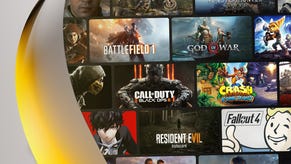In Theory: Will Apple Launch a Home Games Console?
Digital Foundry presents the evidence for a WWDC/E3 reveal
Last year, AppleTV was relaunched as a home media hub and while it lacked App Store integration, it still featured a fully functional A4 processor at its core: rampant overkill for the limited functionality on offer, but a perfectly sound business decision by a company already fabricating millions of the chips. The machine currently costs just £101.
An AppleTV revamp featuring App Store and games-playing capabilities makes a lot of sense. While Microsoft and Sony have been eager to position their consoles as games machines with media capabilities, a refreshed AppleTV would be the opposite: a fully realised media hub that just happens to play great games. This approach is nothing new for Apple – after all, the other iOS devices put other functionality first and foremost but have swiftly come into their own as very capable handheld games machines.
Repositioning AppleTV doesn't upset games publishers and it doesn't devalue their core gamer offerings on the traditional HD consoles, but it does introduce a potentially disruptive product that allows the platform holder to extend the reach of its iTunes and App Store offerings still further: a £100 media hub that also plays games that could look as good - or better - than Infinity Blade? That's a hugely tempting proposition, and the system would also have more than enough processing power to cope with game streaming for services like Gaikai and OnLive.
"I heard somebody the other day say AppleTV, which I love, they're going to start putting the App Store on AppleTV with games" - David Jaffe
We're not the only ones to have come to this conclusion. There's a lot of buzz in the games industry about an AppleTV revamp.
"I heard somebody the other day say AppleTV, which I love, they're going to start putting the App Store on AppleTV with games," Eat Sleep Play boss David Jaffe told Eurogamer. "I'm like 'holy shit'. So yeah, it's possible."
Even with this approach, a great many challenges remain for Apple in bringing iOS home - problems it would need to conquer whether it repurposed A5 into a home console or went balls-out with a powered-up/scaled-up PowerVR/ARM combo.
The current AppleTV may well be using the same core architecture as the iPad 1 and iPhone 4, but it lacks onboard storage. It doesn't matter if the platform holder goes for a mechanical hard drive or flash RAM, adding this crucial component is still going to add to the bill of materials required to manufacture this thing, and pushing the price too high brings you uncomfortably close to Wii and Xbox 360 in particular.
Secondly, there's a question of the control mechanism. AppleTV currently ships with a remote, so either the company needs to redesign it to be more games-friendly or else an alternative approach is required, necessitating developers to come up with multiple control schemes for their App Store games.
Existing iOS devices could be utilised as controllers via the Bluetooth connection, and there have been rumours that AirPlay could be extended to cover gaming (h264 HD hardware encoding is built into both A4 and A5 processors) but it would highly unusual for a games machine to ship without any form of controller, reliant on the customer already owning another device in the same family.
Apple also faces other issues too. Similar to Nintendo, its online gaming system is best described as "embryonic" compared to the enormous infrastructure and rich functionality of Xbox LIVE and the PlayStation Network. Game Center really needs a revamp - never mind the feature set, just its pool table stylings alone suggest that Apple as a corporate entity doesn't really quite "get" gaming yet. The firm doesn't need to create a mammoth games-based internal infrastructure, but it does need games people with the right experience to make this crucial next step.
Perhaps it's this realisation that has seen the company bring in people like Rob Saunders and Nick Grange, and perhaps many other games people elsewhere within the company structure that we don't know about yet. It makes sense that the enormous investment that has gone into the new gaming architecture would be backed up by the personnel required to move Apple onto the next level in advancing the iOS platform.
So long as the price is right, the raw potential offered by re-factoring Apple's new A5 processor into a home console is hugely exciting. Nintendo proved conclusively with Wii that it's not the tech specs that ensure success with the mainstream, it's all about defining an irresistible concept. The iTunes App Store knocks these out of the park on a regular basis of course, but there are elements that could well have strong appeal to the core gamer userbase too.
There's been plenty of talk in the past about syncing gameplay between home and mobile consoles, but Apple has the best chance of doing so, since potentially it could have three different devices tied to the same person - iPhone or iPod Touch for on the move gameplay, iPad for general mobile and toilet use (!) and the AppleTV for the living room. Adding WiFi and 3G game-save syncing would be child's play (in fact, maybe Apple could add wireless iTunes syncing at the same time without us having to use a Jailbreak app to get the job done)...
"In the years to come, we want the playing experience for users to be seamless so you don't have to jump between mobile, console and whatever other device you might have," says Firemint's Rob Murray.
"We want it to be invisible and natural. One minute you might be hooked up to your big screen at home, iPad 2 in hand speeding along in Real Racing 2 HD. The next you're disconnected and on the go, playing the same race - and all you had to do was unplug a single cable. We don't want users thinking about connectivity, it should just happen."
With an Apple home console, it could happen. Will the next WWDC deliver?




.jpg?width=291&height=164&fit=crop&quality=80&format=jpg&auto=webp)



